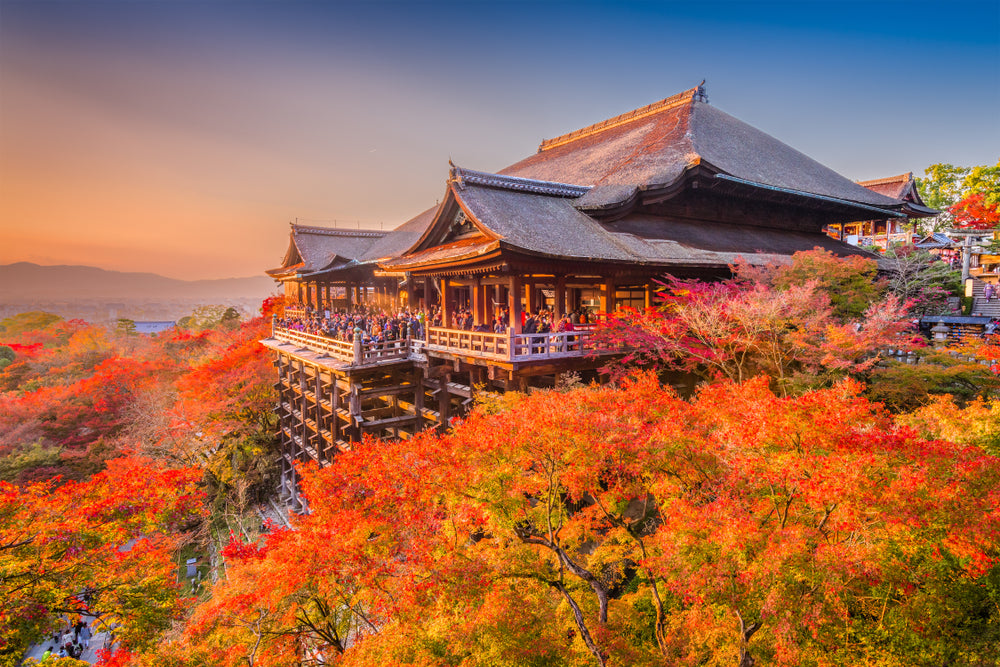What are Japanese Noodles?

Noodles are a mainstay of Japanese culture and cuisine and essential to many of the nation's most delectable traditional meals. There are also numerous sub-varieties and regional variations available. Many Japanese noodles have various variants, each having a unique appearance, texture, and flavor. There is a style of noodle to suit every meal and palate, from chilly thin noodles to chewy, thick noodles. In addition, Japanese noodles have been prepared in various ways for hundreds of years, from Japanese udon noodles to buckwheat noodles to Japanese ramen and various varieties of Japanese noodle dishes.
History of Japanese Noodles

Noodles were first brought to Japan from abroad and began to spread throughout Japan in the early Edo Period (17th to 18th century). The first soba noodles restaurant in Japan, Kendon Soba, gained popularity among the general populace by the middle of the 17th century. Since then, udon noodles have evolved to symbolize western Japan, while soba has emerged as the primary regional dish in eastern Japan. However, nowadays, Japanese noodles are becoming widely consumed, even outside Japan. Check this out and discover more about the history of Japanese noodles.
Different Types of Japanese Noodles

Ramen noodles

Perhaps the most well-known Japanese noodle is ramen. The thin, frequently curled, or wavy noodles made of wheat are a light yellow color. The ingredients for the dough are wheat flour, salt, water, and kansui, or an alkaline water variant. The noodles are frequently referred to as Chuka soba, which means "Chinese-style noodles," and are believed to have originated in China. In addition, kombu (kelp), katsuobushi (dried sliced bonito), niboshi (dried baby sardines), shiitake mushrooms, and onions are frequently added to the ramen soup.
Udon Noodles

The thickest variety of Japanese noodles is udon. The clear, wheat-based noodles are frequently eaten cold with sauce or in a broth soup. Udon noodles are quite thick and have a chewy texture resembling "mochi-mochi," or the chewy and sticky texture frequently preferred in traditional Japanese food. They usually appear glossy and white and stand out in any meal. Due to their bland flavor, udon noodles go well with various sauces, soups, toppings, and varieties from chikara udon, tempura udon, kitsune udon, and kake udon. The noodles can be eaten alone or with a slice of kamaboko and thinly sliced green onions.
Somen Noodles

Somen are comparable to udon in preparation and cooking, but they are much thinner and less chewy. Its simplicity makes it one of the most adaptable Japanese noodle types in preparation and accompaniment. Some regions still employ traditional techniques for creating and kneading the dough for the noodles. They are stronger and springier due to the kneading procedure than some other varieties of noodles. After cooking, it is typically served cold on ice and dipped in tsuyu, a dipping sauce typically made with katsuobushi that also contains some onion, ginger, or myoga (Japanese ginger).
Soba Noodles

Soba, or buckwheat noodles, are often produced from buckwheat and wheat flour. It was formerly prepared completely of buckwheat, but currently, standard wheat flour is frequently added. Soba gets its richer brown hue and earthy flavor from buckwheat flour. Due to the buckwheat in the noodles, it is also regarded as one of the healthier types. Similar to udon, soba dishes come in many forms, from kake soba, okinawa soba, tempura soba, and toshikoshi soba, to noodles served in soup. The long noodles symbolize long life, but their sturdy buckwheat base connotes toughness and brittleness.
Yakisoba Noodles

Another relatively new addition to Japanese cuisine is yakisoba, which has just gained popularity in the past century. This kind of cuisine typically consists of fried noodles with sauce, vegetables, and meat. It is comparable to a stir-fry and is thought to have Chinese origins. In general, yakisoba features a lot of intense flavors. It can also be ordered as a "yakisoba pan," which is yakisoba sauce served within a bun resembling a hot dog bun.
Top Brands of Japanese Ramen Noodles

There is more to instant noodles than just hot water and spice. Additionally, they are rich in historical and cultural significance. Instant noodles were developed in 1958 by Momofuku Ando as a postwar invention to help fight world hunger. Since then, they have grown into a massive industry. In addition, a fantastic bowl of instant noodles is a warm, carb-heavy, salty, and pleasurable thing to slurp. Discover the top brands of instant ramen and enjoy an instant snack in the comfort of your home.
• Nissin Cup Noodles
• Sapporo Ichiban Ramen Noodles
• Acecook
• Toyo Suisan
What Spices are used in Japanese noodles?

Ramen is a popular Japanese noodle soup meal both in Japan and abroad. Although there are infinite varieties, the dish contains a broth base, long, thin wheat noodles, and a variety of toppings. This Japanese cuisine varies depending on area and characteristics, from the broth to the noodles to the toppings. Shio ramen, Tonkotsu ramen, Shoyu ramen, and Miso ramen are the four primary broth flavors of ramen. Additionally, a lot of ramen restaurants develop flavors based on this as well. Here are the best spices and toppings added to ramen noodles that will complete your ramen bowl.
• Furikake
• Yuzukosho
• Rayu (Chili Oil)
• Boiled Eggs
• Menma
• Chashu
• Marinated Bamboo shoots
• Green onions
• Nori seaweed
You can still add hundreds of toppings to make the perfect bowl of ramen. Get to know the various toppings and spices used in Japanese noodles you can add to ramen.
What Sauces are Best to Use in Japanese noodles?

Noodles are a fundamental component of Japanese cuisine. They can be eaten chilled with dipping sauces, in soups, stir-fries, or salads, and are usually served hot and cold. They are generally considered to be simple, quick dinners. As Japanese noodle dishes become increasingly well-liked over time, the desire to understand more about this classic Japanese delicacy has only been stronger. Read on to learn more about the many Japanese noodles and the ideal sauces to make the tastiest noodles you have ever had.
Best Japanese Ramen in the US

Ramen from Japan is a dish that was originally Chinese but is now much more closely associated with Japanese culture. There are countless ramen types available now, thanks to the success of this delectable Japanese dish in capturing the attention of the entire world. This dish offers something unique to each diner because there are so many various ways to make it. That said, American ramen chefs are no different from other ramen chefs in that they all use a unique process to arrive at their final product. In fact, ramen, which only recently became famous in American cities, is now entering the mainstream of the nation. Here is the best ramen in the US.
• Otaku Ramen
• Ramen Danbo
• Mugen Noodle Bar
• Nakamura
• Johnny Noodle King
Read on and learn more about the best Japanese ramen in the US and enjoy slurping hot soup in sunny weather.
Are Japanese Noodles Good for Weight Loss?

Japanese noodle foods are high in fat and carbohydrates, just like other noodle cuisines. Due to its large calorie content, it significantly increases the risk of weight gain. But there is one special Japanese noodle that you may eat and even use to aid in weight loss without gaining any weight. Soba noodles are a healthier option for those controlling their weight and those with high blood sugar, inflammatory, celiac, and cardiac problems because they also have a low glycemic index and nutritional fiber and are gluten-free. Additionally, buckwheat noodles, which are also free of fat and cholesterol, contain significant levels of manganese, lean protein, carbohydrates, vitamin B, vitamin C, and thiamine. Because it doesn't contain gluten, buckwheat is an excellent alternative for people who follow a gluten-free diet. Read on and learn more about the best Japanese noodles for weight loss.
Japanese noodles are versatile dishes with so many kinds, from regional varieties, healthy alternatives, hot pot dishes, stir-fried noodle dishes, and many more versions from different countries. Moreover, there are different types of noodles, from Harusame (cellophane noodles or glass noodles), Shirataki noodles (translucent noodles from konjac yam), rice noodles, and cold noodles with tsuyu dipping sauce. These Japanese noodles are also easy to make, and you can definitely enjoy them in the comfort of your home. Try the Japanese instant noodles now with the Sugoi Mart noodles collection and enjoy a heartful bowl of ramen.
It's Japan Crate Time!
Japan Crate makes it easy for every customer to purchase tasty sweet and savory snacks from Japan. Japan Crate's delivery and shipping service are reliable and efficient in every country. The Japanese items you order online won't take long to arrive, so you can dig into your goodies right away.
Japan Crate has the most delicious Japanese snacks you'll surely enjoy. Subscribe to a box of Japanese-limited treats each month at your home! Japan Crate will add spice to your life with the best authentic Japanese treats. Just click the link above to sign up for your account right now. Japan Crate will bring you the delectable taste of Japan in no time!
Author Bio







Leave a comment